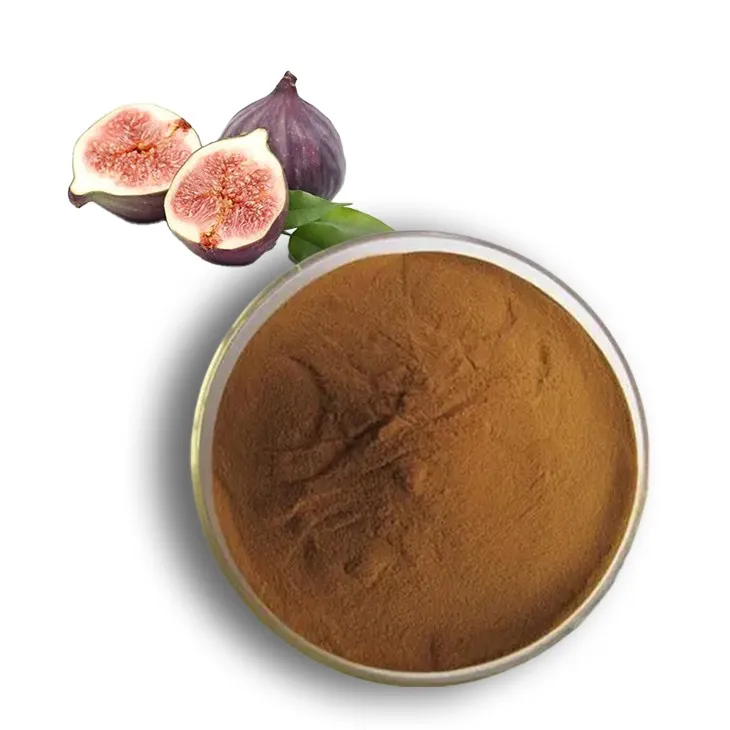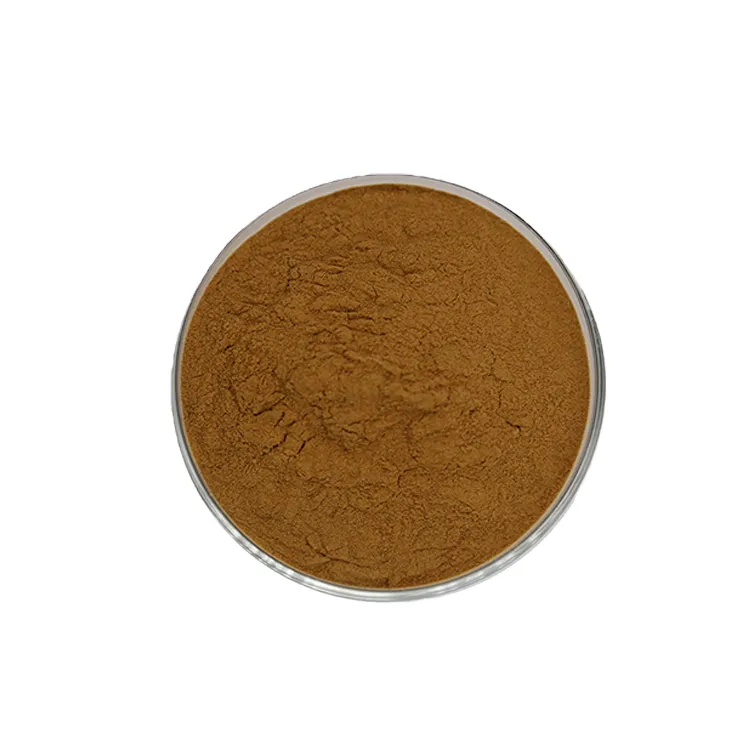- 0086-571-85302990
- sales@greenskybio.com
The process of extracting ficin from fig extract.
2024-11-29

1. Introduction
Ficin is an important enzyme that can be found in Fig Extract. It has various applications in different industries, such as the food and pharmaceutical industries. The extraction process of ficin from Fig Extract is a complex but crucial procedure. Understanding this process is essential for efficient production and utilization of ficin.

2. Collection of Figs
The first step in obtaining Fig Extract for ficin extraction is the proper collection of figs.
2.1 Selection of Fig Varieties
Different fig varieties may contain different levels of ficin. Therefore, it is important to select the appropriate fig variety. For example, some varieties may be known for their high ficin content. Research has shown that certain native or traditional fig varieties in specific regions may be rich sources of ficin.
2.2 Harvesting Time
The time of harvesting figs also affects the quality and quantity of ficin in the extract. Figs should be harvested at the right stage of maturity. If harvested too early, the ficin content may not be fully developed, while if harvested too late, the figs may start to deteriorate, which can also impact the ficin content. Generally, figs are harvested when they reach a certain color, size, and firmness.

3. Pretreatment of Figs
After collection, figs need to undergo pretreatment before the extraction of ficin.
3.1 Cleaning
Figs should be thoroughly cleaned to remove any dirt, debris, or pesticides. This can be done by washing the figs with clean water. In some cases, mild detergents or sanitizers may be used, but they need to be carefully rinsed off to avoid any contamination of the extract.
3.2 Drying
Drying the figs is an important pretreatment step. There are different methods of drying figs, such as air - drying and oven - drying. Air - drying is a more natural method, but it may take longer. Oven - drying can be faster, but the temperature and time need to be carefully controlled. The purpose of drying is to reduce the water content in the figs, which can help in the subsequent extraction process.
3.3 Grinding
Once the figs are dried, they are usually ground into a fine powder. This increases the surface area of the figs, making it easier for the extraction solvent to access the ficin within the fig cells. The grinding process should be carried out under appropriate conditions to avoid over - heating, which could potentially damage the ficin.

4. Extraction of Fig Extract
After pretreatment, the extraction of fig extract is carried out.
4.1 Selection of Solvent
The choice of solvent is crucial for the extraction of fig extract. Different solvents have different solubilities for the components in figs. Commonly used solvents include water, ethanol, and acetone. Water is a polar solvent and can extract many water - soluble components in figs. Ethanol and acetone are organic solvents that can extract non - polar or less polar components. In some cases, a mixture of solvents may be used to achieve a more comprehensive extraction.
4.2 Extraction Conditions
The extraction conditions, such as temperature, time, and solvent - to - fig ratio, need to be optimized. Higher temperatures may increase the extraction rate, but it may also cause the degradation of some components. The extraction time should be long enough to ensure sufficient extraction, but not too long to avoid excessive extraction of unwanted components. The solvent - to - fig ratio also affects the extraction efficiency.
4.3 Extraction Methods
There are different extraction methods, such as maceration, percolation, and Soxhlet extraction.
4.3.1 Maceration
Maceration is a simple and commonly used method. In this method, the ground figs are soaked in the solvent for a certain period of time. The solvent penetrates the fig particles and extracts the components. After the maceration period, the mixture is filtered to obtain the fig extract.
4.3.2 Percolation
Percolation involves the slow passage of the solvent through a bed of the ground figs. This method can be more efficient than maceration as it allows for better contact between the solvent and the figs. The percolate, which is the liquid that passes through the figs, is collected as the fig extract.
4.3.3 Soxhlet Extraction
Soxhlet extraction is a more continuous extraction method. The ground figs are placed in a Soxhlet extractor, and the solvent is continuously recycled through the figs. This method can achieve a more complete extraction of the components in figs, but it also requires more complex equipment.
5. Purification of Ficin from Fig Extract
Once the fig extract is obtained, the next step is to purify ficin from it.
5.1 Chromatography
Chromatography is one of the most important purification methods for ficin. There are different types of chromatography, such as ion - exchange chromatography, gel filtration chromatography, and affinity chromatography.
5.1.1 Ion - Exchange Chromatography
Ion - exchange chromatography separates ficin based on its charge. Ficin has a certain charge at a particular pH. By using an ion - exchange resin with the opposite charge, ficin can be selectively adsorbed onto the resin. Then, by changing the ionic strength or pH of the elution buffer, ficin can be eluted from the resin in a purified form.
5.1.2 Gel Filtration Chromatography
Gel filtration chromatography separates ficin based on its size. The fig extract is passed through a column filled with a gel matrix. The larger molecules are excluded from the pores of the gel and elute first, while the smaller molecules, such as ficin, can enter the pores and elute later. In this way, ficin can be separated from other larger or smaller molecules in the fig extract.
5.1.3 Affinity Chromatography
Affinity chromatography is a highly specific purification method for ficin. It utilizes the specific binding affinity of ficin to a particular ligand. For example, if ficin has a specific binding site for a certain molecule, a column with that molecule immobilized on the matrix can be used. Ficin will bind to the ligand on the column, and other non - specific molecules will pass through. Then, by using an appropriate elution buffer, ficin can be eluted in a highly purified form.
5.2 Precipitation
Precipitation is another method for purifying ficin. By adding certain precipitating agents, such as ammonium sulfate, to the fig extract, ficin can be selectively precipitated out of the solution. The precipitate can then be collected and further purified if necessary. However, this method may not be as specific as chromatography and may require additional purification steps.
6. Characterization of Purified Ficin
After purification, it is important to characterize the purified ficin to ensure its quality and activity.
6.1 Enzyme Activity Assay
The enzyme activity of ficin can be measured using specific substrates. For example, ficin can hydrolyze certain proteins. By incubating ficin with a protein substrate and measuring the rate of hydrolysis, the enzyme activity of ficin can be determined. This helps to ensure that the purified ficin has the expected enzymatic activity for its intended applications.
6.2 Protein Characterization
Protein characterization techniques, such as SDS - PAGE (sodium dodecyl sulfate - polyacrylamide gel electrophoresis), can be used to determine the molecular weight and purity of ficin. By running a sample of the purified ficin on an SDS - PAGE gel, a band corresponding to ficin can be visualized. The intensity and position of the band can provide information about the purity and molecular weight of ficin.
7. Conclusion
The process of extracting ficin from fig extract is a multi - step and complex procedure. It involves the proper collection and pretreatment of figs, extraction of fig extract, purification of ficin from the extract, and characterization of the purified ficin. Each step is crucial for obtaining high - quality ficin with the desired activity and purity. Understanding and optimizing this process is essential for the successful application of ficin in various industries, especially in the food and pharmaceutical industries.
FAQ:
What are the main steps in obtaining fig extract for ficin extraction?
The main steps in obtaining fig extract for ficin extraction include proper collection of figs. This may involve selecting ripe figs at the right time. Then, pre - treatment is carried out, which might include cleaning the figs to remove dirt and other impurities, and perhaps crushing or grinding them to prepare for further extraction processes.
Why is chromatography used in the purification of ficin from fig extract?
Chromatography is used in the purification of ficin from fig extract because it is a very effective method for separating different components based on their chemical properties. Ficin and other substances in the fig extract have different affinities for the stationary and mobile phases in chromatography. This allows ficin to be separated from other compounds in the extract, resulting in a purer form of ficin.
What are the key factors in precisely controlling the extraction conditions?
The key factors in precisely controlling the extraction conditions include temperature, pH, and the concentration of solvents used. For example, different temperatures can affect the solubility and stability of ficin. The pH needs to be adjusted to an appropriate level to ensure that ficin remains in its active form. The concentration of solvents can influence the extraction efficiency and the selectivity of extracting ficin from the fig extract.
How does a deep understanding of the chemical properties of the extract and ficin contribute to the extraction process?
A deep understanding of the chemical properties of the extract and ficin is crucial for the extraction process. Knowing the chemical structure and reactivity of ficin helps in choosing the right extraction and purification methods. For the fig extract, understanding its composition allows for better separation of ficin from other components. For example, if we know that ficin is sensitive to certain chemical environments, we can adjust the extraction conditions accordingly to protect its activity and ensure a successful extraction.
What are the applications of ficin in the food and pharmaceutical industries?
In the food industry, ficin can be used as a meat tenderizer. It helps break down proteins in meat, making it more tender. In the pharmaceutical industry, ficin may have potential applications in enzyme - based therapies. It can be used in the study and development of drugs that target specific protein - related diseases, as it has the ability to act on proteins.
Related literature
- Ficin: Properties, Production, and Applications"
- "The Biochemistry of Ficin Extraction from Fig Extracts"
- "Advances in Ficin Purification from Natural Sources"
- ▶ Hesperidin
- ▶ citrus bioflavonoids
- ▶ plant extract
- ▶ lycopene
- ▶ Diosmin
- ▶ Grape seed extract
- ▶ Sea buckthorn Juice Powder
- ▶ Beetroot powder
- ▶ Hops Extract
- ▶ Artichoke Extract
- ▶ Reishi mushroom extract
- ▶ Astaxanthin
- ▶ Green Tea Extract
- ▶ Curcumin Extract
- ▶ Horse Chestnut Extract
- ▶ Other Problems
- ▶ Boswellia Serrata Extract
- ▶ Resveratrol Extract
- ▶ Marigold Extract
- ▶ Grape Leaf Extract
- ▶ blog3
- ▶ blog4
-
Wholesale L - Tyrosine Suppliers.
2024-11-29
-
The best milk thistle extract in 2024.
2024-11-29
-
High - quality kidney bean extract products.
2024-11-29
-
The best aged garlic extract on the market.
2024-11-29
-
How to make powder with L - arginine.
2024-11-29
-
Black Garlic Extract
2024-11-29
-
Yellow Pine Extract
2024-11-29
-
Peppermint Oil
2024-11-29
-
Chasteberry Extract
2024-11-29
-
Cat Claw Extract
2024-11-29
-
Selenium yeast
2024-11-29
-
Astaxanthin
2024-11-29
-
Scutellaria Extract
2024-11-29
-
Cassia Seed Extract
2024-11-29
-
Hops Extract
2024-11-29





















